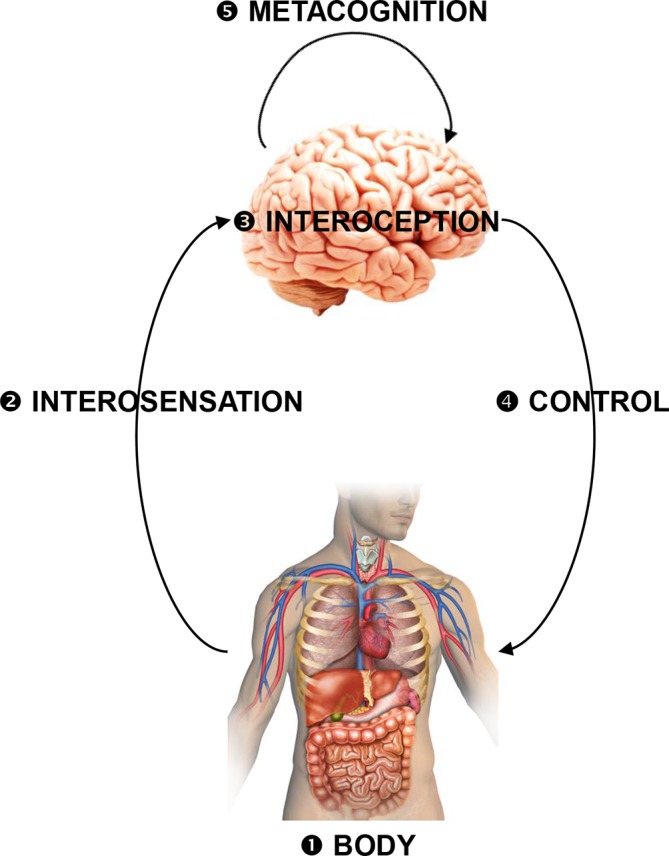Figure 2.

A coarse schematic overview of the inference–control–metacognition loop for bodily regulation (for details, see16). Interoceptive surprise as a possible computational substrate of fatigue can arise from perturbations of any components of this loop: (1) actual perturbations of bodily state that evade cerebral attempts of correction (eg, chronic inflammation, cancer); (2) altered interosensations (due to pathologies of interoceptors or afferent pathways); (3) disturbances of interoception (eg, inflammatory lesions of insula); (4) disturbances of interoactions (neuronally or endocrinologically mediated cerebral influences on bodily functions), for example, inflammatory lesions of ACC, brainstem, hypothalamus or their projections; (5) altered metacognitive processes (eg, changes in expected performance levels). The multiple failure loci offer a potential explanation for the clinical heterogeneity of fatigue and speaks to the necessity of developing tools for differential diagnostics at the circuit level.
